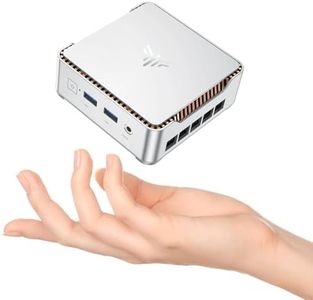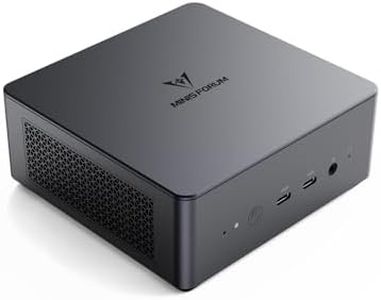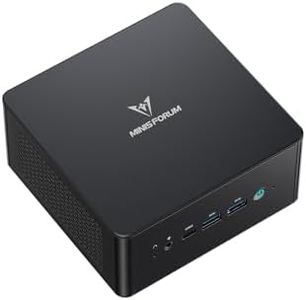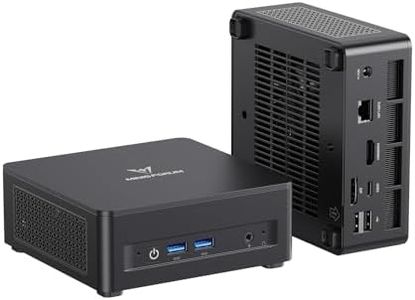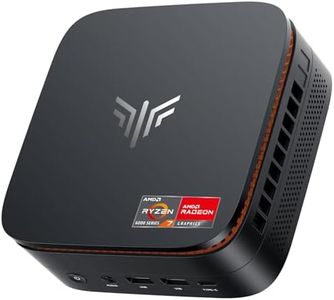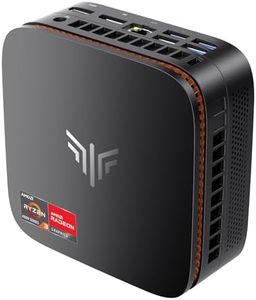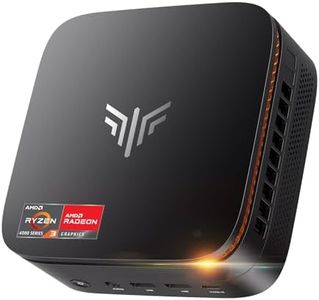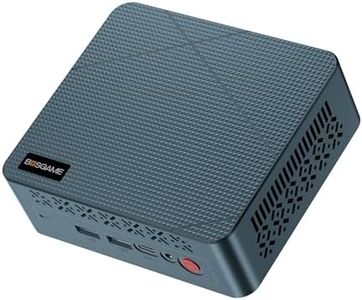We Use CookiesWe use cookies to enhance the security, performance,
functionality and for analytical and promotional activities. By continuing to browse this site you
are agreeing to our privacy policy
10 Best mini PC desktops
From leading brands and best sellers available on the web.Buying Guide for the Best mini PC desktops
Mini PC desktops are compact computers designed to save space while delivering enough power for everyday tasks, work, or even light gaming. Choosing the right mini PC requires you to think about what you want to do with it, such as browsing the web, creating documents, editing media, or simply having a silent, energy-efficient device in a small footprint. The main things to consider are performance, connectivity, noise, and how much you plan to upgrade or customize your mini PC in the future.Processor (CPU)The processor is the brain of your mini PC and decides how fast and smoothly your computer can handle tasks. For light work like browsing or streaming, lower-end CPUs work fine, but tasks like photo editing or multitasking need stronger processors. Entry-level CPUs are good for basic uses, mid-range ones suit office work and moderate multitasking, while high-end CPUs are for creative projects or light gaming. Think about what you’ll use your mini PC for most and look for a processor that fits those needs.
Memory (RAM)RAM is your mini PC’s short-term memory and directly affects how many programs or browser tabs you can keep open at once. Less memory (like 4GB) is enough for very light use, but 8GB is common for everyday tasks and offers smooth performance. Power users or those doing creative work should look for models with 16GB or more. Your workload should guide how much RAM you need—pick more if you like to multitask or use demanding applications.
Storage Type and CapacityStorage is where your files and programs live. Mini PCs often use SSDs (faster and more responsive) or HDDs (cheaper but slower). SSDs come in sizes like 128GB, 256GB, 512GB, or more. Less storage is fine for web-only use, but if you plan to store lots of files, photos, or install many programs, choose a larger SSD or make sure you can add extra storage later. Think about whether you’re happy using cloud storage or need lots of local space.
Graphics (GPU)Most mini PCs rely on integrated graphics, which are built into the processor. These are fine for basic tasks and light media editing. If you want to do casual gaming or more advanced graphic work, look for models with better integrated graphics or even a dedicated GPU. For the majority of users, strong graphics aren’t a priority, but if you know you’ll play games or do design work, pay close attention to this part.
Connectivity (Ports and Wireless)Mini PCs come with a variety of ports (like USB, HDMI, and Ethernet) and wireless options (Wi-Fi and Bluetooth). If you have many devices—monitors, external drives, or peripherals—make sure the mini PC has enough and the right types of ports. Modern mini PCs usually have Wi-Fi for wireless internet and Bluetooth for accessories. Think about your workspace: do you need to connect lots of things? Or is basic wireless enough? Match the options to your setup.
Size and Mounting OptionsMini PCs are built to be small, but some are tiny enough to hide behind a monitor or TV, while others are a bit larger but offer more upgrade options. If you’re short on desk space or want a clean look, choose a smaller model or one with VESA mounting. Larger ones may offer better cooling or let you add extra parts, so think about whether you value compactness or expandability.
UpgradabilitySome mini PCs let you upgrade parts like RAM or storage, while others are sealed tight and cannot be changed after purchase. If you like the idea of making your mini PC faster in the future, check if it’s easy to open and upgrade. However, if you prefer something you just set up and forget, this might not be important for you.
Noise and CoolingBecause mini PCs are small, they can get warm, and cooling is important. Some use fans, others are fanless (silent). Fanless mini PCs are great for quiet environments but may not handle high loads for long periods. If you need a silent device for your living room or office, look for a fanless model; if you need continuous performance, choose one with good cooling—even if it makes a little noise.
